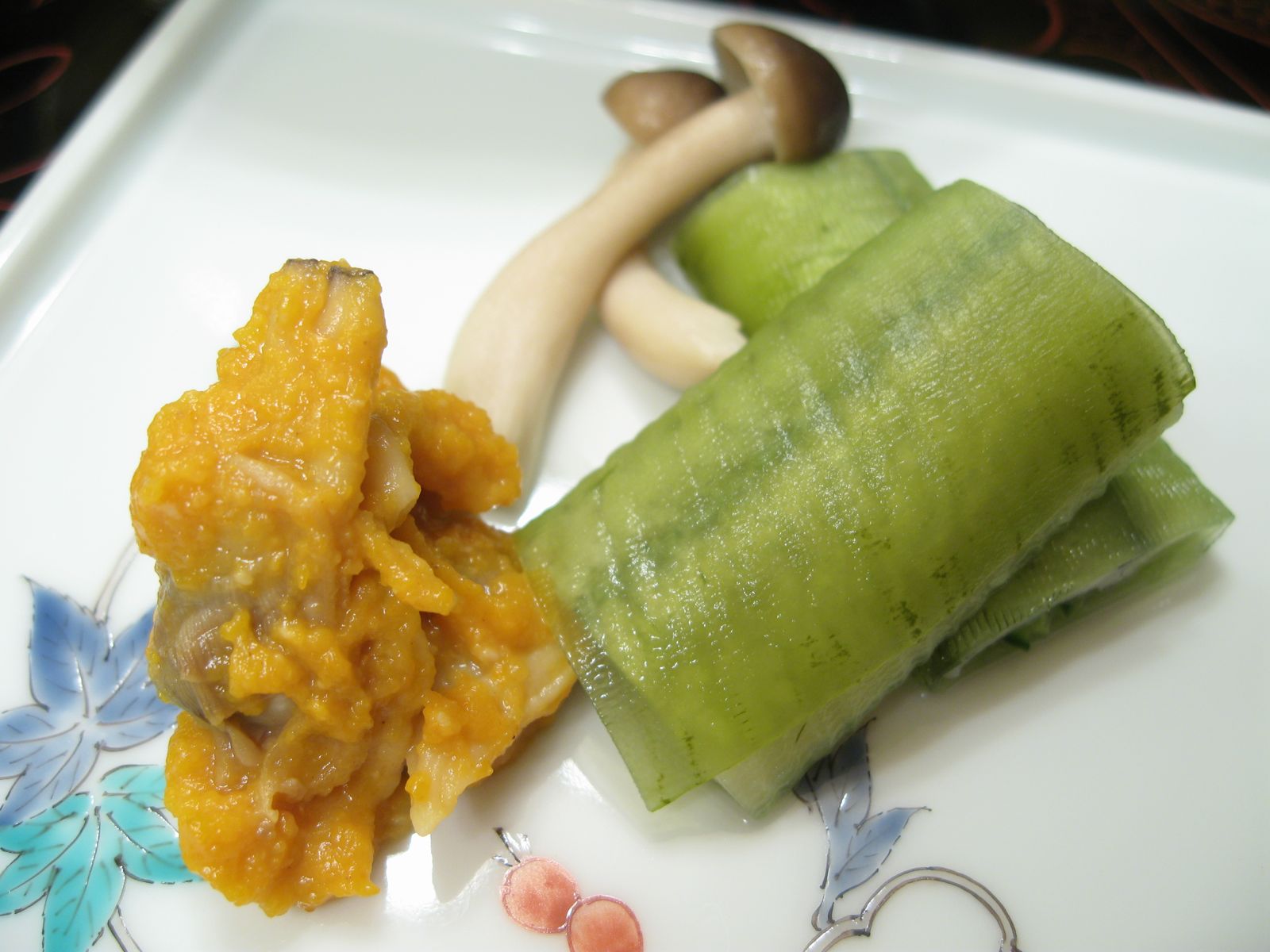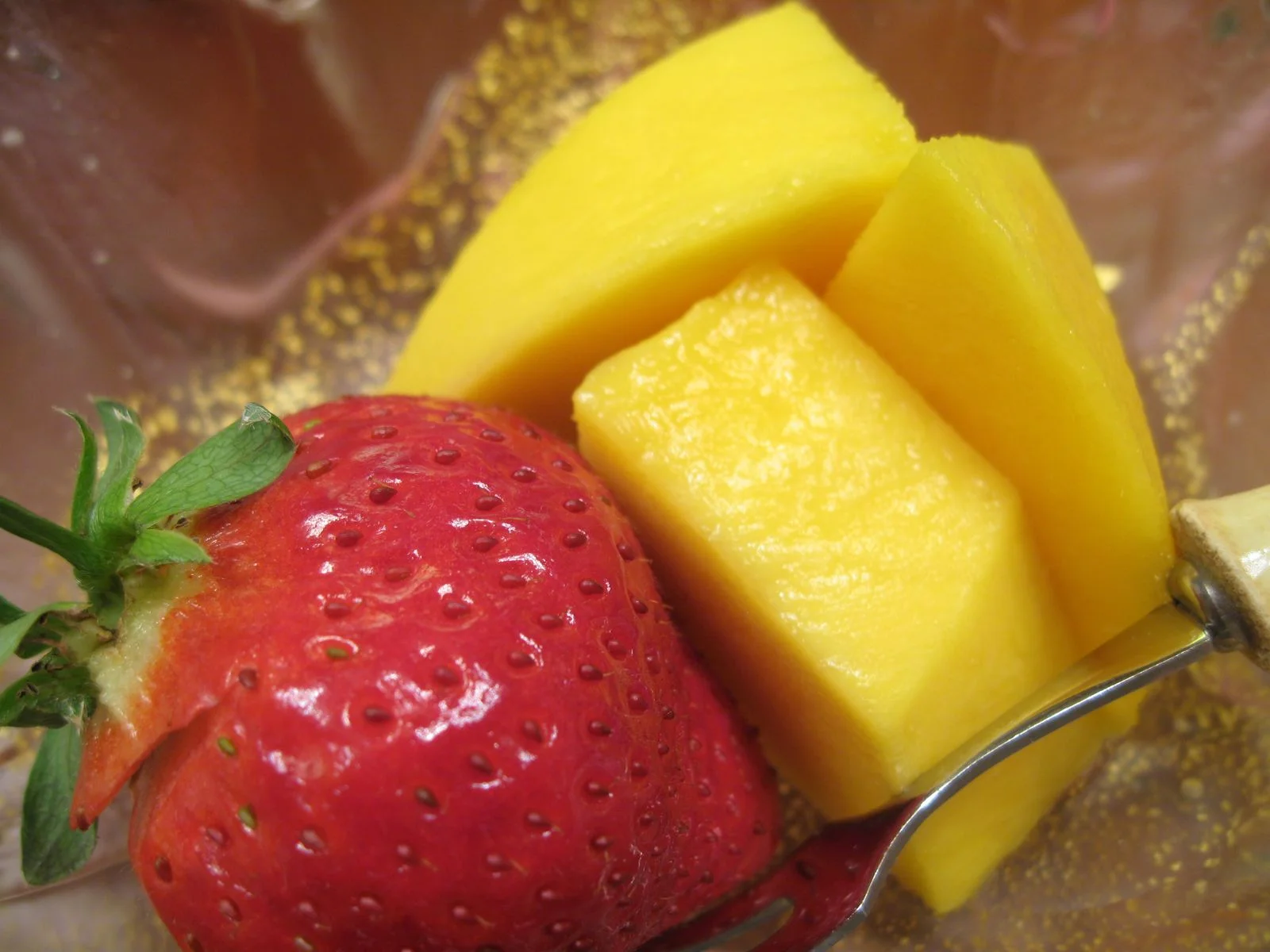Jisaku Tsukiji
It was my mother's first time in Japan. While she was only staying for a short week and a half, the planning for her visit started many months before. I had to create an agenda demonstrating Japan's incredible culinary variety while still making sure she would enjoy, and remember, each meal. If she were to leave Japan thinking the food is anything less than the best in the world, I'd have failed. Kaiseki was going to be a problem. There are just too many places. The number of Michelin starred kaiseki restaurants alone would consume her trip in its entirety; how would I fit in okonomiyaki, teppanaki, yakitori, sukiyaki and shabu shabu? I knew an early morning trip to Tsukiji market was essential, not only for the tuna auction but to show her the abundance of fresh fish that we don't have access to in the US, and the ease with which it can be purchased here. Besides, forget cereal; what better way to start the day than with a small crate of Hokkaido uni.
To complement our visit to Tsukiji, later that night, I made a reservation at Jisaku Tsukiji, a small kaiseki restaurant on the fish market's perimeter. Like most well-known kaiseki houses, diners eat in private rooms. This means two things: the meal will be private, and it will be expensive. Thankfully, this was a once in a lifetime experience.
We arrived just past eight, took off our shoes and were shown to our room just across the small garden of trickling water falls and impeccably lit trees and bushes. We sat down on the tatami floor and got comfortable. "I could get used to eating in just socks," my mother shared. Me too. While this level of comfort wouldn't function in all dining rooms, Japan's unique juxtaposition of inelastic formality and attention to personal comfort are still at odds; but somehow, work. With that, our waitress handed us warm towels to settle in, bowed, and silently closed the sliding paper door.
The menu was entirely of fish except for a wagyu course, which I had phoned to reserve in advance. I thought that made sense considering we were practically inside Tsukiji market. The waitress confirmed that we had no food allergies when I made it clear that we are allergic to nothing and eat everything, no matter how strange. At least I do. Thankfully, my mother doesn't speak Japanese.
The first course what appeared to be a small plate of pickled vegetables and mushroom served with round clam. But looks can be deceiving. I studied the menu closer and found all I needed to find to begin this meal with a large smile. The Japanese word for sea urchin, うに, jumped out at me like food samples in a depachika. Shimeji mushrooms provided a firm texture but overall the dish still skewed more toward a delicate taste of the ocean that balanced the creamy sea urchin with the almost-crunchy clam. This delicious combination was served with crisp cucumber and refreshing seaweed, and another crunchy clam variety for which I don't know the name.
Suimono is a traditional hot, clear broth served at most kaiseki meals, particularly in the winter, for it's pure and light flavor and its ability to stimulate the palate as well as warm the body. This soup was served with a crab cake, japanese udo, mizuna, and ginger. The flavor was of bonito and crab, both warm and refreshing, with a hint of ginger to accentuate the flavor of the shellfish. The greens were very lightly cooked preserving their flavor, as well as crunchy texture, adding variety to each spoonful with the soft fish cake. My mother thought this tasted a little bland, which I understand: it did. But the flavor was intentionally muted, both tamed and reserved, as this soup is about the focused, subtle flavor of fish.
Next came a bowl of small white fish served raw and topped with grated white radish and pomegranate seeds. The acidity of the radish, vinegar, and pomegranate brightened both the fish and my palate. The fish were so fresh that its flavor blended almost effortlessly into the background, while only scent was of the vinegar in which the radish marinated. This dish was also served cold which was a nice contrast after the warmth of the suimono -- its flavors were almost elevated. My mother ate this dish faster than I did, which almost never happens, a clear sign that she liked it. Swish.
I decided it would be better to tell my mother about the potential toxicity of blowfish after the meal. In retrospect, this might have been a mistake because she did actually finish her portion though a second for me would have been most welcome. Blowfish can either change your life or take it, and conveniently, its peak season lies over the Christmas holidays. Though completely translucent, its crunchy texture resembles a firm mollusk with a uniquely clean and refreshing flavor. This fugu was served with shoots of daikon radish, chives, grated radish, a wedge of bitter orange, and was sauced with ponzu. This is a fish that tastes best when acidulated, particularly with the sour-leaning flavor of bitter orange. The flavor was bright, vibrant and very light. This was my favorite course of the night.
By this point it became clear that nearly every course alternated in a well-thought progression of hot/cold and cooked/raw. Following in this pattern came a small bowl with a variety of cooked Japanese taro, salmon, carrot, and a green vegetable called shintorina. This was prepared in a soy-based broth that provided a light salty background that did not distract me from the flavor of the other ingredients. The salmon was just barely orange and full of soft fatty ridges making the fish slide apart into the broth at the first bite. This dish is proof that salmon can be thoroughly cooked yet still maintain its soft and juicy flavor.
Lobster is a favorite crustacean, but I can't remember ever loving it grilled as this process makes the moisture evaporate fairly easily. Not here. My grilled lobster was served with sudachi, whose juice had the crustacean acidity while complementing the moisture that was running from the shell. A lovely course that was my mother's favorite of the evening.
The next course -- steamed tilefish with its own eggs, spinach, and enoki mushrooms in a soy-based starch -- exemplifies what is meant by Japanese balance. This dish is restrained: there are no sweet, salty, bitter, sour, or other strong flavors that jump out. In fact the broth itself tastes only lightly of bonito. But in the process this white canvas of flavor lets the true and subtle, almost sweet taste of tilefish eggs come through, which is often difficult to detect, even when served raw. The soy broth marinates every bite locking every drop of moisture within. The mushrooms and cooked spinach add textural contrast without distracting from the fish's flavor.
Finally came the one meat course of Maesawa wagyu beef served with miso, okra, and green pepper. The beef was slightly salty from the miso; but had the pepper to sweeten it. The wagyu's marbelized fat gently held the succulent meat together making each bite-sized piece soft enough to tear apart without a knife. The okra added vegetal bitterness, and the inside seeds had a sticky texture much like the inside of the peppers. The course was tame and pure, only a few bites in size, just enough to make the inclusion of a fatty meat course considered light.
The tasting had ended, and we were brought miso soup, pickled vegetables, and rice to close the meal. The inclusion of these three dishes is common with kaiseki meals: help yourself if you're still hungry; but don't worry too much if you are not. The miso soup was packed with tofu and nameko mushroom, making it more about the contents than the dashi broth itself. I actually found the soup somewhat difficult to drink without a spoon, since its density made the broth stay behind and slide forward in a giant sludge. Tasty; but not what I was expecting.
The pickled vegetables including lotus root, cabbage, white radish, and seaweed had an acidity that worked as a palate cleanser, wiping the savory flavors clean for the subtle flavor of taro rice and later, dessert. My mother doesn't like pickled vegetables, so I was happy to help her out. Each of these vegetables was crispy and full of water.
Sitting next to the pickled vegetables was a small bowl of taro rice topped with ginko nuts. With the addition of taro, the rice became more chewy and smelled more like barley. A really nice earthy finish.
Dessert came: three small slices of sweet and ripe mango with a strawberry. Being not much of a dessert person, I appreciate the Japanese de-emphasis on sweets and emphasis on simplicity with its desserts. Even though the source of these mangoes was far from Japan, they were still very sweet and juicy.
The second dessert was a small red bean paste wrapped with a striped bean paste wall. The wall collapsed with each bite adding textural variety to the paste. The dessert, while sugared, was of a similar sweetness level to the fruit course that had followed. The dessert was prettier than it tasted, however, and seemed to be more of a novelty than a tasty treat.
As we wound down our meal we sat and talked in our room, overlooking the immaculate garden for some time over roasted green tea. Despite being near freezing outside, the warm tea and heated tatami floor kept us comfortable. The restaurant only does one seating per night, so there was no rush in the world. Despite being completely booked, Jisaku Tsukiji was silent. The only sound to be heard was the trickling water from the garden just outside our window. This was a fantastic meal -- delicate and humble, demonstrating that excellent ingredients need nothing other than simple preparation.

























